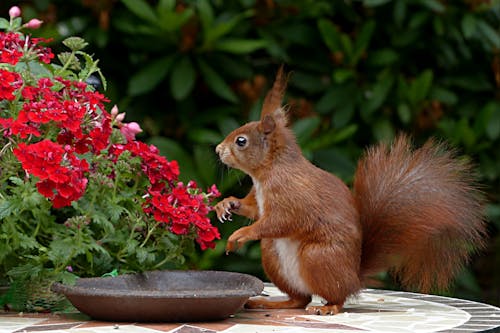Top 10 Native Plants to Bring Birds Into Your Yard
It all begins by selecting plants that welcome bird’s to our backyard. But native plants are special in their ability to attract birds, since they offer food, habitat and nesting opportunities that best meet local wildlife needs.
Native plants cultivate the insects and fruits birds depend on in their native ranges, whereas ornamental or exotic species do not. Ten of the Most Effective Native Plants to Draw Bird’s to Your Yard
Sunflowers (Helianthus spp.)
Seeds of sunflowers are loved by seed-eating bird’s, such as finches, cardinals and sparrows. Here are some reasons why their tall and colorful flowers not only look beautiful in the garden but also produce seeds that attract birds:
Benefits:
- High-energy seeds for bird’s
- Helps pollinators like bees Enriches wildlife habitat
- Easy to grow in most regions
To keep sunflowers for natural bird foraging, let them fully mature and dry on the stem.
Amelanchier spp. (serviceberry)
The small tree or shrub bears berries in late spring that are a magnet for fruit-eating birds such as robins, cedar waxwings and thrushes.
Benefits:
- Offers nutrient dense berries
- Provides nesting locations and shelter
- Resilient in a range of soil types
Tip: If you plant a native variety that is adapted to your area, it will most likely do the best.
Echinacea purpurea – Purple Coneflower
This flower isn’t just pretty, but a fabulous bird attractor as well. Among them, the feisty goldfinches love their seeds!
Benefits:
- Seed-eaters – Seed-eating birds are attracted with seeds
- Provides beneficial habitat for butterflies and other pollinators
- Requires little water or maintenance
Tip: Don’t deadhead after fall, leave the flower heads on so you can feed seeds to birds all winter.
Other common names include Juniperus virginiana (Eastern Red Cedar).
It is an evergreen and benefits birds all year round, providing shelter, nesting sites, and berries through the winter as well.
Benefits:
- Winter food: berries
- Dense foliage provides coverage from predators
- Houses such bird’s as cedar waxwings and bluebirds
- Culture: Best grown in full sun in well-drained soil.
Milkweed (Asclepias spp.)
Everyone knows that milkweed is the host plant for monarch butterflies, but it also attracts bird’s that eat insects and seeds.
Milkweed is critical for many insects and invertebrates which support songbirds like warblers, as well as a variety of other insectivorous bird’s.
Benefits:
- Encourages bugs that are bird fodder
- It gives seed pods which finches love to eat.
- Supports a diverse ecosystem
Tip: Select a native species from your respective region for the most beneficial gains.
Dogwood (Cornus spp.)
In late summer and fall, dogwood trees (and shrubs) follow suit, producing a bounty of berries that draw in fruit-eating bird’s.
Benefits:
- They are loaded with fats and proteins
- Provides nesting, shaded places
- Lures in cardinals, robins, woodpeckers, and others
Tip: Flowering dogwoods are known to attract birds and pollinators.
Black-Eyed Susan ( Rudbeckia hirta)
Black-eyed Susans are spectacular wild plants that insects and birds find irresistible. Finches and sparrows adore their seeds.
Benefits:
- Seeds serves as an organic source of food.
- They require little care and are also drought-resistant
- Attracts bees and butterflies
- Plant in sunny spots: leave seed heads after blooming.
Elderberry (Sambucus spp.)
The small dark berries produced in clusters on elderberry shrubs are a particular favorite of fruit-eating birds such as orioles and tanagers.
Benefits:
- Berries are also a good source of healthy nutrients
- Provides dense cover for nesting
- Fast to grow and low-maintenance
- DO: Plant in rich, well-drained soil, with plenty of moisture, and full sun to partial shade.
Oak Trees (Quercus spp.)
There really are few trees that support as much wildlife as oak trees. A range of birds, from jays to woodpeckers to nuthatches, flock to them for their acorns.
Benefits:
- They are high-energy food from acorns
- A varied insect support for birds that eat insects
- Provides protection and breeding locations
Tip: Choose native oak species for significant wildlife benefits.
Bee Balm (Monarda spp.)
Bee balm is a bold beautiful plant with nectar-rich flowers that will attract hummingbirds and other nectar-loving animals too.
Benefits:
- Hummingbirds and Butterflies are attracted to Nectar
- Aromatic foliage repels pests
- Easy to grow in most gardens
Advice: Prune flowers to promote more throughout the season
Why Choose Native Plants?
Provides Better Habitat for Local Birds:
Native plants are tailored to local needs of birds more than exotics.
Less Maintenance:
They need lesser water and fertilizers to thrive in their natural environment.
Encourages Biodiversity:
Native plants not only help to attract wildlife like bird’s but also all sorts of pollinators and beneficial insects.
Planting a Yard that Attracts Birds: General Tips
Layering:
Plant a variety of trees, shrubs and groundcover for different habitats.
No Pesticides:
These chemicals harm birds and the insects they eat.
Add Water:
Include a birdbath or water feature for your plants.
Leave Some Wild:
Keep some of your lawn or yard nice and wild for more cover and foraging.
Final Thoughts
Planting native plants is one of the best things you can do to provide habitat for birds in your yard. Providing food, lodgings, and nests means creating a steady supply that helps both bird’s and the immediate ecology.
Pick some combination of these ten to create a backyard oasis that will make bird’s come flocking — literally and figuratively. So you can enjoy their visual and auditory presence year-round.
So, start planting right this moment and simply get pleasure from your yard as a paradise for our feathered buddies!
